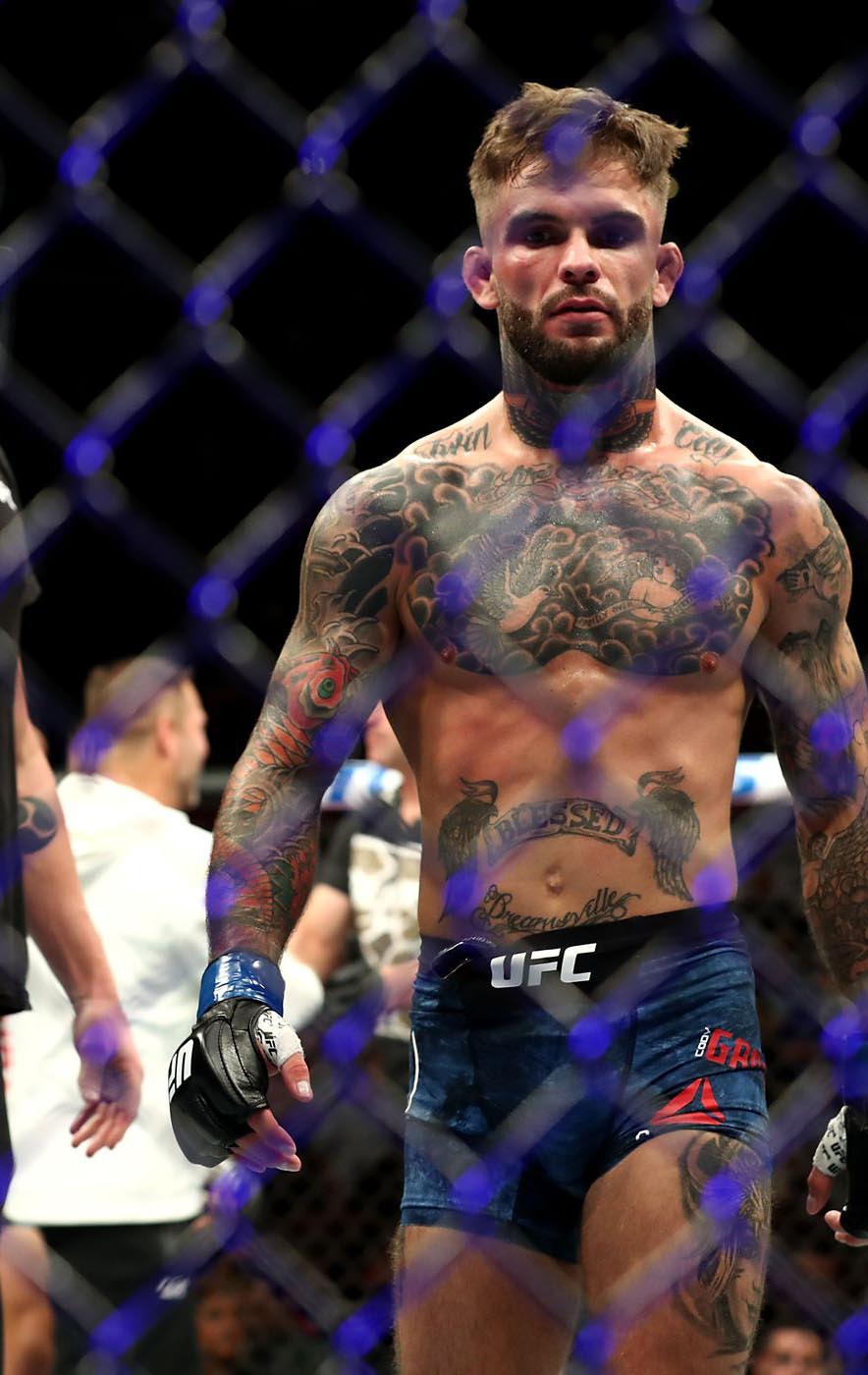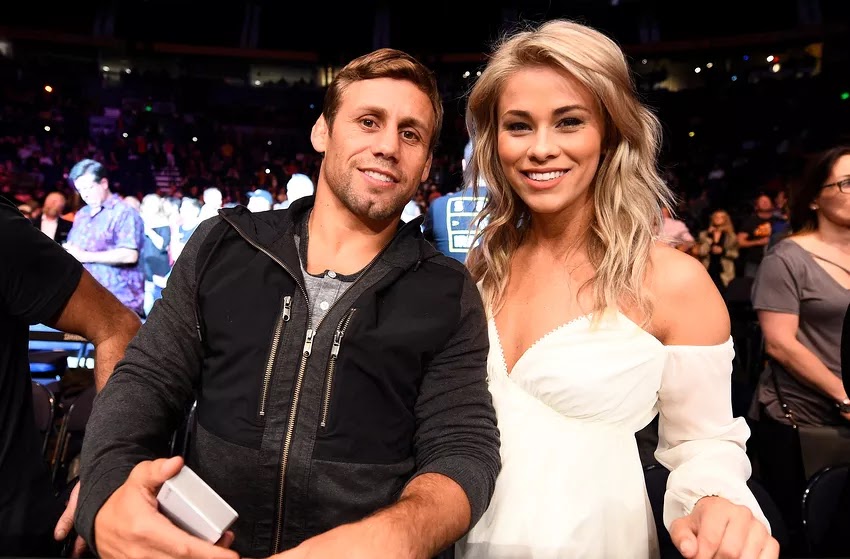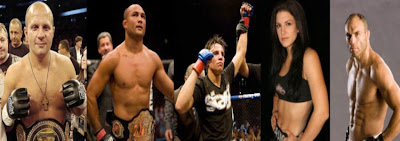Once again the House That Urijah Faber Built is under attack. is a controversial outfit. Long associated with its founder, Team Alpha Male’s success mirrored that of “The California Kid.” But as the longtime WEC poster boy transitioned to the UFC, cracks began to show. The camp started to face attacks from all three of the groups that fuel mixed martial arts discourse: fans questioned the character and maturity of the team; fighters questioned the fight IQ and situational awareness of the fighters; and the analysts — most notably Dominick Cruz — questioned their inconsistent performance at the world championship level, as TAM became known more and more for their fighters’ ability to beat everyone except the champions of the divisions they competed in.
Faber was soundly defeated by Mike Brown and Jose Aldo for the WEC featherweight title, and defeated by Cruz and Renan Barao in his bids for bantamweight gold. Joseph Benavidez was twice beaten by Cruz and Demetrious “Mighty Mouse” Johnson in bantamweight and flyweight title matches, including a brutal finish at the hands of Johnson in his last title bout. Chad Mendes was also one of TAM’s near misses, as he was defeated by Aldo twice and knocked out by Conor McGregor in his attempts to capture featherweight gold.
They received a brief respite from criticism with the help of the previously undefeated Cynthia “The Cavalry” Calvillo and the previously undefeated former bantamweight champion Cody Garbrandt. But that was after so much luster had been lost, as Miesha Tate parted ways with the gym, then went on to win a championship, and Paige Vanzant was thoroughly and repeatedly exposed before she left for greener pastures. However, the biggest blow to the team and to the brand was the very public and very messy divorce involving former TUF alumnus and at the time newly-minted UFC Bantamweight Champion, TJ Dillashaw.
The title win by Dillashaw over Barao was a tremendous victory for the gym, that is, before Dillashaw left the team with with the person that he attributed his success to: Duane “Bang” Ludwig. But after the dominant, one-sided, and clinical win Garbrandt had over longtime bantamweight kingpin (and longtime TAM detractor) Dominick Cruz, any and all critiques of the team and their ability to develop a fighter fell by the wayside. This is especially in light of the fact that Cruz had lifted the championship from Dillashaw, indirectly hinting that TAM was the better coaching staff, or at least one that had been underestimated.
But since then, high profile losses have put a target squarely on Team Alpha Male’s backs, as the previously streaking Calvillo looked predictable, unprepared, and unaware in a decision loss to former champion Carla Esparza, and the finishing touches on any goodwill Team Alpha Male had gathered was summarily snuffed out with the UFC 227 loss by Garbrandt against Dillashaw, his second knockout defeat in a row. So it’s worth discussing the Pros and Cons of Team Alpha Male — the things that the team does and doesn’t do well as a fight camp.
PROS
Acquiring Athletic Talent
Team Alpha Male consistently scouts top end talent. One of their biggest selling points as a team is that they can provide aspiring fighters with world class athletic talent to train with, drill with, spar against, observe, and compete against. That only heightens one’s familiarity with combat and their comfort with it, because there are no easy drills, rounds, or days in a camp with a team full of elite athletes. The sport has lots of high level technicians, whether it be wrestling, grappling, or striking. But as big as the sport has gotten and as many people are now competing in it, the hardest thing to find, cultivate, and get exposure to is top end athleticism. This team has it in spades, from retired members (Faber) to former members (Vanzant) to newly acquired members (Sage Northcutt); athleticism is the one thing this camp has never been short on.
Developing Wrestling/Grappling
 Team Alpha Male has made it a point to recruit a number of high level wrestlers, including Lance Palmer (4X All American, PAC 10 champion), Mendes (2X All American, PAC 10 Wrestler of the Year), Faber (2X NCAA Qualifier), and DIllashaw (3X NCAA Qualifier); these are just a few of the examples of high level wrestlers on the team. Josh Emmett wrestled at the JUCO and NAIA level, Alex Munoz wrestled at Oklahoma State University, and even Garbrandt was a state champion who had multiple scholarship offers on the table.
Team Alpha Male has made it a point to recruit a number of high level wrestlers, including Lance Palmer (4X All American, PAC 10 champion), Mendes (2X All American, PAC 10 Wrestler of the Year), Faber (2X NCAA Qualifier), and DIllashaw (3X NCAA Qualifier); these are just a few of the examples of high level wrestlers on the team. Josh Emmett wrestled at the JUCO and NAIA level, Alex Munoz wrestled at Oklahoma State University, and even Garbrandt was a state champion who had multiple scholarship offers on the table.
The large majority of fighters they bring in have a wrestling background, and the benefit of facing guys with top end backgrounds and athleticism is that it allows for a familiarity and comfort in wrestling exchanges that is hard to duplicate in other camps. Not only do the high level wrestlers enhance their own skills, awareness, conditioning, and creativity in regards to takedowns, takedown defenses, and scrambles; they develop these qualities in the fighters who don’t have the extensive or accomplished wrestling background of the elite fighters in the gym.
Cynthia Calvillo was nowhere near a top collegiate or international wrestler, but has shown an improved offensive wrestling game that has allowed her to score numerous takedowns and use scrambles to secure submissions in three fights, as well as arguably stalemate former collegiate wrestler and strawweight champion Carla Esparza. Vanzant had no previous combat sports experience, but was developed into one of the best clinch fighters and scramblers in the women’s divisions. Last but not least is Northcutt, the world class Karateka who had two embarrassing submission losses and went to Team Alpha Male to shore up his overall wrestling and grappling game. Doing so would allow him to secure takedowns if and when he’s in trouble on the feet, defend and punish takedowns when opponents inevitably attempt to grind him out and submit him, and create scrambles if and when an opponent gets in superior position and seeks to pound/grind him out.
Working with a camp full of accomplished and experienced wrestlers turned grapplers and mixed martial arts fighters forces fighters who join the gym to acclimate themselves to a certain pace and physicality that comes with working with high level wrestlers. And while it can’t put you on the level of a top end wrestler, it can help you develop comfort with the techniques and positions, as it did with Benavidez and Calvillo. Or you can develop a game that maximizes the physical tools and skills you do have, as was the case with Northcutt and Vanzant.
Developing Fighters
Team Alpha Males isn’t known for being the most technical or individually structured team in the world, but the big class training approach they use is very good for familiarizing young fighters with the grind of being a fighter, both physically and mentally. As stated earlier, having a room of top end athletes — and top end wrestlers — forces fighters to develop a mental toughness and level of physical conditioning that comes from facing guys who can physically outclass or dominate you at any given time. It might not refine talent, but it does condition them. By exposing them to a level of athleticism that hasn’t become standard fare in mixed martial arts, it helps establish the best base for a mixed martial arts career.
CONS
Developing Strikers
Team Alpha Male has been full of guys who can hit hard, move fast, and work at high paces, but not guys who have really fleshed out the finer points of technical awareness or execution as it pertains to striking. Many guys have a good basic skill set of striking — they know the foundational techniques, but they don’t know how to drill them in a manner that develops technically sound, structured, and situationally aware strikers. Striking isn’t just knowing the moves — it’s when, where, and how you use them that sets strikers and the camps they fight out of apart from the rest.
An example of this lack of refinement is Calvillo’s one note predictable striking that was based more on movement, volume, and pace, instead of creativity, diversity, and defensive technique. Another would be Faber’s incredibly creative but defensively irresponsible striking style, one that surged when he was at his physical peak (with a few hiccups), but failed spectacularly when he began to lose a step athletically.
Gameplanning
Teams such as Jackson-Wink, AMC Pankration, and others are known for their ability to look at an opponent and develop a game plan that can allow a less skilled, physically talented, or gifted fighter to navigate any shortcomings and win. They often use approaches that exploit weaknesses in conditioning, character, or specific skill. When Demetrious Johnson fought Henry Cejudo the first time, instead of seeking to escape or survive Cejudo’s clinch, he attacked, stunning him before overwhelming him. Most opponents were afraid to engage for fear of being taken down and controlled, but Johnson’s team prepared him to get back up and to actively engage Cejudo in the clinch. Matt Hume has trained DJ to be able to fight in every range well enough to make opponents work, but more importantly, he taught Johnson how to transition between ranges and approaches; that makes him dangerous to opponents in any range.
On the side of Jackson-Wink, their best game plans for Holly Holm involved two very different opponents. One was Ronda Rousey, whose aggression, athleticism, physicality, and clinch game had cut a swath through the division; they had a strategy that limited the effectiveness of those things by keeping Holm mobile, picking away at Rousey while outpositioning her and ultimately finishing her. In a fight years later against streaking featherweight Megan Anderson, the usually criminally one-dimensional Holm utilized deft footwork and reactive takedowns to throw Anderson off balance, out-positioning and working her over en route to a three-round decision win.
By comparison, Team Alpha Male has not historically been as meticulous in their tape study or preparation of their fighters. Vanzant had carved out an identity as a high pace, punishing clinch fighter who overwhelmed opponents with a blend of physicality and athleticism, then turned into a below average range fighter who was summarily outstruck then submitted by blown-up atomweight Michelle Waterson. One of the more damning examples of their lack of acumen is their series of attempts to defeat Dominick Cruz; it took almost four go-rounds before someone realized the best way to attack Cruz is to make him lead, take advantage of his less than stellar offensive striking, and counter his attacks, alternating between huge single shots and less powerful combinations of strikes. Prior to that, multiple team members wasted huge amounts of energy pursuing him aimlessly, chasing takedowns that weren’t set up and telegraphing strikes that got them dropped, beat up, and defeated.
The final and most obvious example of this lack of gameplanning was the most recent loss to Dillashaw. With ten months to prepare, Garbrandt, who had huge advantages in power, athleticism, and boxing eschewed those advantages, forcing a firefight with an opponent who had a better chin, a better grasp on the balance of offense and defense, and a wider and more refined toolset. He essentially repeated the same mistake he made in fighting Dillashaw the first time, pressuring him and seeking to knock him out, instead of protecting his chin by controlling distance with his jab, manipulating distance and position to walk Dillashaw into shots. That was how he hurt Dillashaw in the first fight — on the counter, not rushing in.
It isn’t as comprehensive as it could be, but this best hits at what Team Alpha Male does well as a camp — how it best improves, empowers, and enables the progression of its fighters — as well as how and why Team Alpha Male has come up short in the biggest spots and against its best opposition.Their approach to fighting has clearly gotten results over the length of their existence, but when the lights are brightest, the same problems seem to arise, and it has cost numerous guys titles and career-defining wins. Cody Garbrandt is just the latest victim of that, overshadowing the previous victim of this coaching, Cynthia Calvillo. They are still a very good team, full of top end athletes and guys who are more than capable of competing with and challenging the very best. Unfortunately, as is usually the case, they aren’t good enough to defeat the best, at least not consistently.
• T.J. Dillashaw vs. Cody Garbrandt 2 (UFC Men’s Bantamweight Championship): TJ Dillashaw def. Cody Garbrandt via TKO (strikes) 4:10 of Round 1.
UFC 227: Dillashaw vs. Garbrandt 2 took place August 4, 2018 at Staples Center in Los Angeles, California.
Click HERE for more UFC 227 Post-Fight Analysis
















